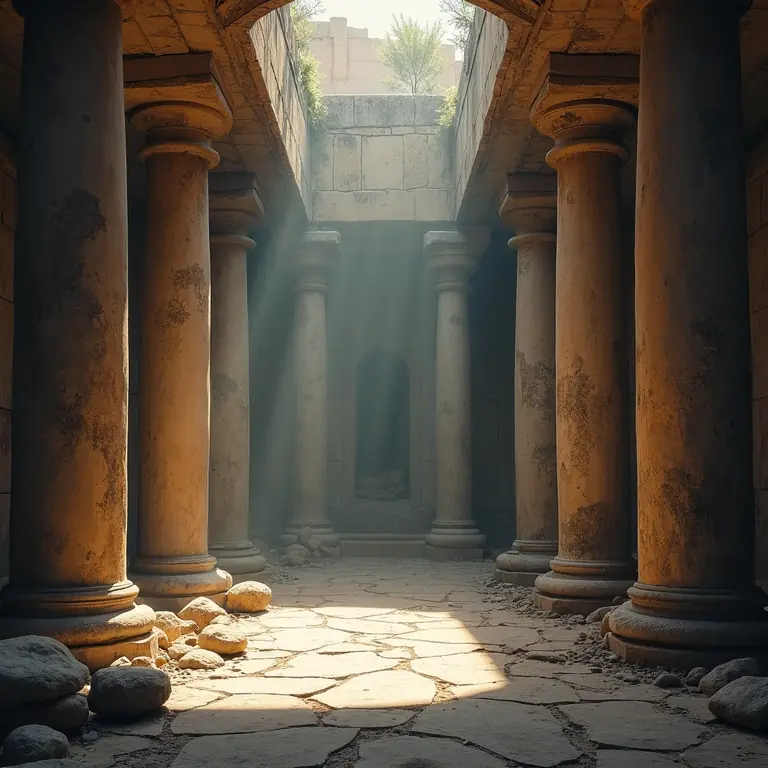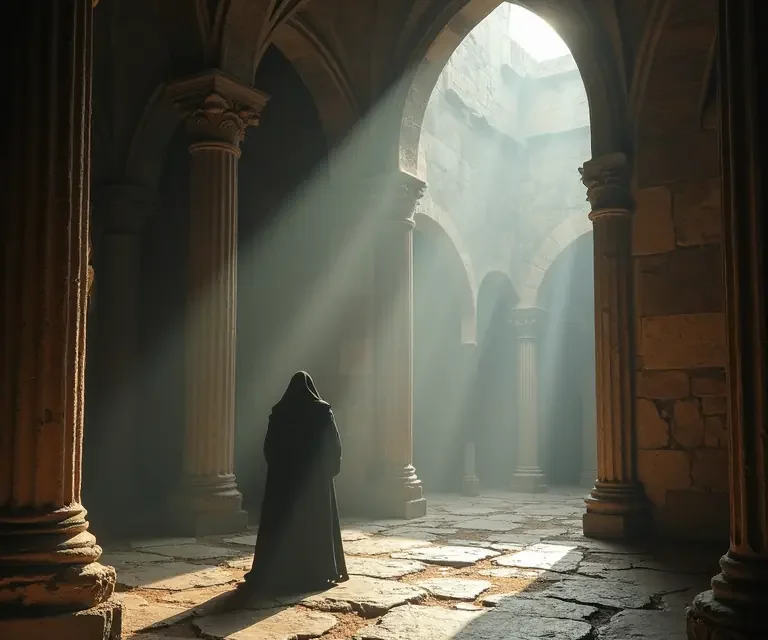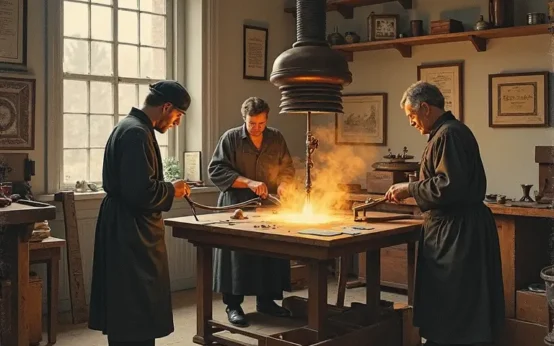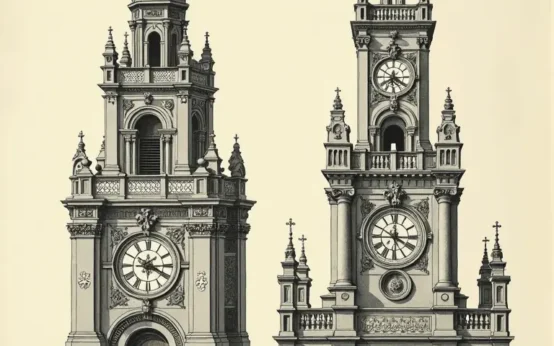For millennia, humans have been captivated by echoes. Beyond a simple repetition of sound, echoes have been imbued with spiritual significance, utilized in architectural design, and even employed as tools for communication. This article delves into the fascinating world of historical echo chambers, exploring their acoustic properties, their role in ancient rituals, and how their unique characteristics influenced perception and revelation. We’ll journey from the sacred caves of antiquity to the grand halls of Renaissance palaces, uncovering the secrets hidden within these reverberant spaces.
The Physics of Echoes: Beyond Simple Reflection
Before examining historical examples, it’s crucial to understand the science behind echoes. An echo isn’t merely sound bouncing off a surface; it’s a complex phenomenon governed by principles of reflection, absorption, and reverberation. When sound waves encounter a boundary, a portion of their energy is reflected, while another portion is absorbed by the material. The amount of energy reflected depends on the surface’s density and texture – hard, smooth surfaces reflect more sound than soft, porous ones.
The time it takes for the reflected sound to return to the listener determines whether it’s perceived as a distinct echo or as part of the overall reverberation. A delay of less than approximately 0.1 seconds is generally perceived as reverberation, contributing to the fullness and richness of sound within a space. Longer delays are heard as distinct echoes. Furthermore, the shape of the reflecting surface significantly affects the echo’s quality. Concave surfaces focus sound, intensifying the echo, while convex surfaces diffuse it. The size and shape of the space also play crucial roles, creating complex patterns of reflections and interference. This interplay of factors results in the unique acoustic signature of each echo chamber.
Ancient Echoes: Caves, Ritual, and the Voice of the Gods
The earliest “echo chambers” were naturally formed caves. These spaces, often located in remote and inaccessible areas, were considered sacred by many ancient cultures. The echoing properties weren’t merely a curious phenomenon; they were interpreted as the voices of spirits, ancestors, or deities. The very act of speaking within a cave felt transformative, as the returning sound seemed to originate from beyond the human realm.
Sites like the Lascaux Cave in France and the caves of Altamira in Spain, renowned for their Paleolithic cave paintings, likely served as ritual spaces where echoes enhanced the spiritual experience. Imagine the shaman or priest chanting within the cavern, their voice amplified and distorted by the natural acoustics, creating an atmosphere of awe and reverence. Similarly, the Oracle at Delphi in ancient Greece, situated near a geological fault line that may have produced echoing sounds and hallucinogenic gases, was believed to be a conduit to the god Apollo. The ambiguous and unsettling nature of the echoes likely contributed to the Oracle’s enigmatic pronouncements, perceived as divine revelations.
Roman Engineering and the Whispering Gallery
The Romans, masters of engineering, were among the first to intentionally manipulate acoustics in their architectural designs. While not building dedicated “echo chambers” in the same sense as later periods, they understood and utilized the principles of sound reflection in structures like amphitheaters and bath complexes. The elliptical shape of Roman amphitheaters, like the Colosseum, was designed to focus sound towards the center, ensuring that performers could be heard by a large audience.
However, the most intriguing example of Roman acoustic manipulation is the so-called “Whispering Gallery” in the Baths of Caracalla. This circular space allowed someone whispering on one side to be clearly heard by a person on the opposite side, despite the distance. This effect wasn’t due to a true echo, but rather to the focusing of sound waves along the curved wall, minimizing absorption and directing the sound precisely across the diameter. It served as a playful demonstration of Roman engineering prowess, and likely as a space for private conversation.

Medieval Monasteries and the Echoes of Prayer
During the medieval period, monasteries became important centers of learning and religious practice. The acoustics of monastic churches were carefully considered, often intentionally designed to enhance the experience of chanting and prayer. Large, stone-built churches, with their high vaulted ceilings and minimal furnishings, produced significant reverberation. This wasn’t necessarily aimed at creating distinct echoes, but rather at enveloping the congregation in a rich, resonant soundscape.
The prolonged decay of sound created a sense of timelessness and spiritual immersion, fostering a connection to the divine. Gregorian chant, with its simple melodies and extended vocalizations, was particularly well-suited to these acoustic environments. The echoing voices seemed to fill the space with an ethereal quality, reinforcing the sense of sacredness and transcendence. The deliberate use of acoustic space was integral to the monastic experience, contributing to the contemplative atmosphere and the feeling of being surrounded by the presence of God.
Renaissance Palaces and the Art of Illusion
The Renaissance saw a renewed interest in classical architecture and a growing fascination with optical and acoustic illusions. Wealthy patrons commissioned architects to create elaborate palaces and villas featuring hidden chambers, secret passages, and ingenious acoustic devices. While dedicated echo chambers weren’t always a primary feature, architects often incorporated spaces designed to manipulate sound in intriguing ways.
One example is the Galleria Grande at the Palazzo Farnese in Rome. While primarily designed as a grand gallery for displaying art, its long, vaulted corridor possesses notable acoustic properties. Whispers can travel considerable distances along the ceiling, and sounds are significantly amplified and distorted. This effect may have been unintentional, but it was likely appreciated by the palace’s inhabitants, who enjoyed demonstrating the space’s unique characteristics to visitors. The Renaissance also saw the development of trompe-l’oeil painting and other illusionistic techniques. These visual tricks were often combined with acoustic manipulations to create a sense of wonder and theatricality.
The Baroque Era: Orchestral Resonance and Theatrical Spectacle
The Baroque era (roughly 1600-1750) witnessed a dramatic flourishing of music and theater. The construction of elaborate opera houses and concert halls demanded careful consideration of acoustics. Unlike the reverberant spaces of medieval churches, Baroque theaters aimed for a balance between clarity and resonance. While some reverberation was desirable to enrich the sound of orchestral music and vocal performances, excessive echo could obscure the lyrics and muddle the harmonies.
Architects employed techniques such as strategically placed wooden panels and ceiling coffers to diffuse sound and reduce unwanted reflections. However, some Baroque theaters also incorporated small, hidden chambers or alcoves specifically designed to create localized echoes. These spaces might have been used for special effects, such as simulating distant voices or creating a sense of supernatural presence. The desire to create immersive and emotionally engaging experiences drove the development of sophisticated acoustic designs.

18th and 19th Century Scientific Inquiry
The 18th and 19th centuries saw a growing interest in the scientific study of acoustics. Researchers began to investigate the physical properties of sound and the ways in which it interacts with different materials and spaces. Experiments were conducted in purpose-built echo chambers to measure the speed of sound, the effects of temperature and humidity on sound transmission, and the principles of reverberation. These scientific investigations led to a better understanding of acoustic design and contributed to the development of more effective concert halls and theaters.
The work of figures like Ernst Chladni, who demonstrated the patterns created by vibrating surfaces, laid the foundation for modern acoustics. These discoveries influenced the design of musical instruments and the construction of spaces optimized for musical performance. The focus shifted from relying on intuition and tradition to employing scientific principles to achieve desired acoustic effects.
Modern Echo Chambers and Beyond
Today, echo chambers are still used for scientific research, architectural testing, and even artistic installations. Anechoic chambers, designed to absorb all sound reflections, are used to test the noise levels of products and to study the effects of silence on human perception. Reverberation chambers, conversely, are used to simulate realistic acoustic environments for testing loudspeaker systems and architectural designs.
The concept of an “echo chamber” has also taken on a metaphorical meaning in the context of social media and political discourse, referring to environments where individuals are only exposed to information that confirms their existing beliefs. This phenomenon can reinforce biases and hinder critical thinking, creating a distorted perception of reality.
The enduring fascination with echoes, from ancient rituals to modern scientific inquiry, underscores the profound impact of sound on human experience. By understanding the physics and psychology of echoes, we can appreciate the power of acoustic environments to shape our perceptions, influence our emotions, and even inspire revelation.
If you’re intrigued by the history of technology that has helped us capture and manipulate sound, you might find particularly interesting.
Further explorations into historical curiosities can be found by following these links:
- The Curious Chronicle of Lost Recipes: Culinary Secrets Across the Ages
- The Curious Mechanics of Automaton Theatre: A History of Miniature Stages
- The Curious Mechanics of Celestial Globes: Mapping the Heavens in Miniature
- The Curious Chemistry of Lost Colors: Pigments, History, and the Art of Remembrance
- The Curious Chronicle of Celestial Navigation: Stars, Sextants, and the Art of Finding Your Way


 The Curious Cartography of Scent: Mapping Perfume Ingredients Through History
The Curious Cartography of Scent: Mapping Perfume Ingredients Through History  The Curious Lexicon of Lost Trades
The Curious Lexicon of Lost Trades  The Curious Calculus of Clock Towers: Time, Geometry, and Civic Pride
The Curious Calculus of Clock Towers: Time, Geometry, and Civic Pride  The Surprisingly Consistent Science of Historical Ice Harvesting – A Frozen History of Commerce & Preservation
The Surprisingly Consistent Science of Historical Ice Harvesting – A Frozen History of Commerce & Preservation  The Unexpectedly Consistent Science of Historical Buttonhooks – Fashion, Function & Forgotten Tools
The Unexpectedly Consistent Science of Historical Buttonhooks – Fashion, Function & Forgotten Tools  The Surprisingly Consistent Science of Historical Toy Soldiers – Miniature Warfare, Materials & Collective Play
The Surprisingly Consistent Science of Historical Toy Soldiers – Miniature Warfare, Materials & Collective Play